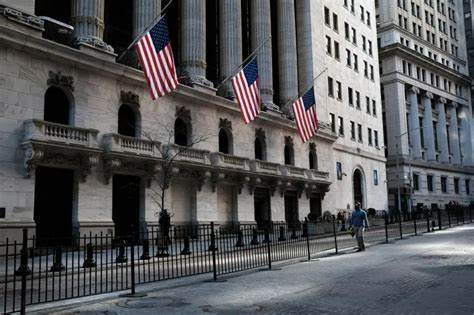Recent fluctuations in US bond yields have ignited a debate over the state of the American economy, with divergent perspectives emerging regarding its growth trajectory. While conventional wisdom suggests a slowdown in economic activity, high-frequency data indicators paint a different picture, signaling continued robustness in the early second quarter.
The reduction in 10-year bond yields, observed since late April, has been attributed to perceptions of a decelerating US economy. However, this narrative may be oversimplified, as underlying data suggests ongoing strength in economic fundamentals. Moreover, the recent decision by Mexico’s central bank to adopt a hawkish stance, pausing rate cuts amidst a neutral policy bias, has further influenced market dynamics, particularly evident in the USD/MXN exchange rate.
Global factors have also played a significant role in shaping recent market trends, with yield declines spurred by dovish signals from major central banks, including the Federal Reserve, ECB, BoE, and BoC. This global context has injected volatility into stock markets across Asia, Europe, and the US, temporarily diverting attention from inflationary concerns.
In the UK, the Bank of England’s hints at potential rate cuts have reshaped expectations, contributing to a shift in interest rate futures. Meanwhile, a slight uptick in initial unemployment claims in the US, particularly in New York, has led to a dip in the 10-year bond yield. However, this isolated incident is not necessarily indicative of broader economic trends.
Despite these developments, ongoing debates persist regarding the trajectory of the US economy. While headline GDP figures for Q1 may appear modest, other indicators such as private domestic final sales point to sustained nominal demand. High-frequency data from institutions like the Atlanta Fed and Dallas Fed further support the notion that the US economy remains resilient.

For traders positioning themselves for potential rate cuts from the Fed and anticipating a significant economic slowdown, recent market trends may pose challenges. The US labor market, while showing signs of loosening compared to previous years, continues to exhibit overall strength, suggesting that fears of a looming recession may be premature.
In contrast, Mexico’s economic outlook presents a different narrative, with Banxico’s decision to maintain its overnight rate reflecting ongoing stability amidst global volatility and domestic inflation concerns. This hawkish stance carries implications for future monetary policy and currency exchange rates.
Central bank strategies, both in the US and Mexico, are critical drivers of market sentiment and investor behavior. While the Fed’s focus on inflation underscores its cautious approach, Banxico’s nuanced response to economic pressures reflects a broader consideration of domestic and global factors.
In conclusion, recent shifts in bond yields and currency markets reflect a complex interplay of economic indicators, global influences, and central bank policies. As investors navigate these dynamics, careful attention to high-frequency data and central bank communications will be essential in discerning meaningful trends from short-term fluctuations.

